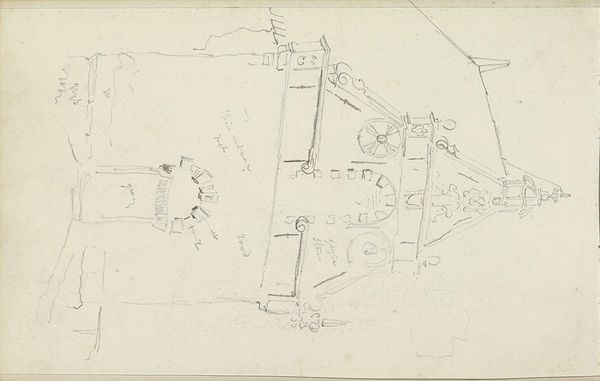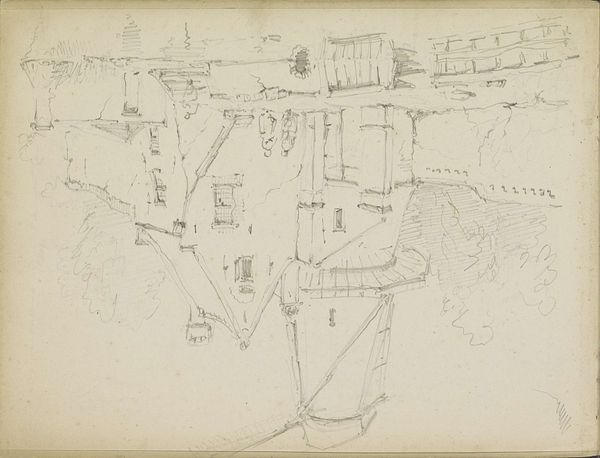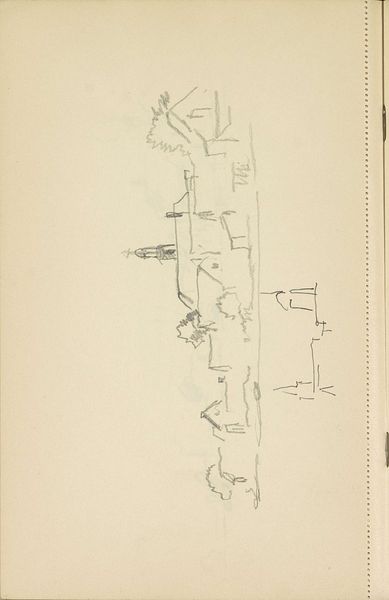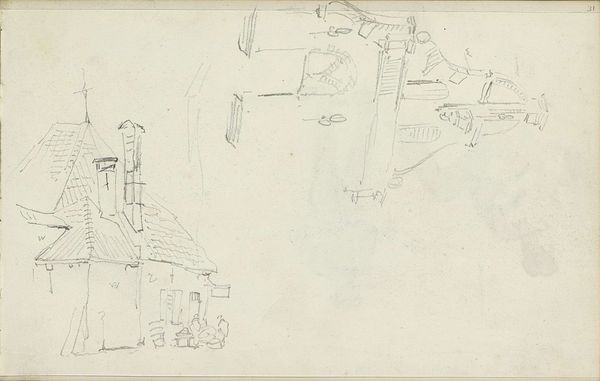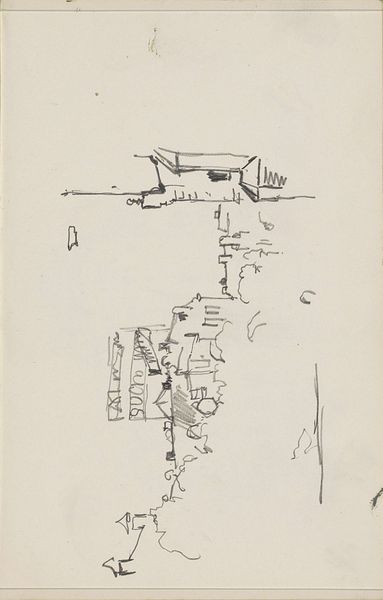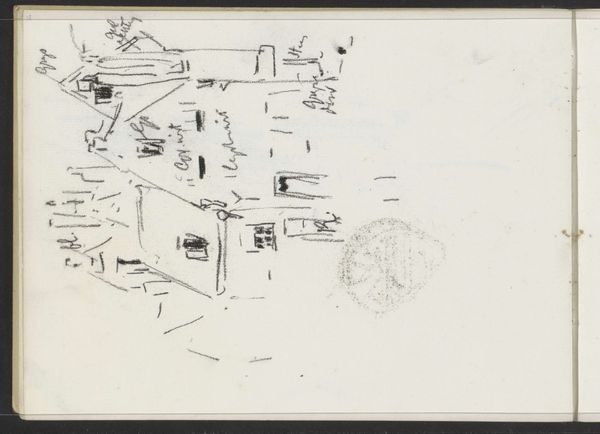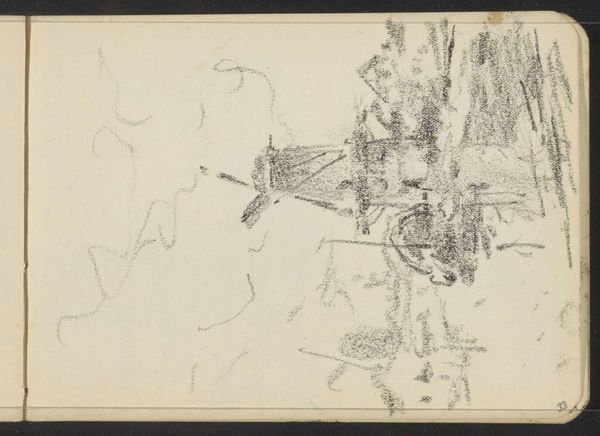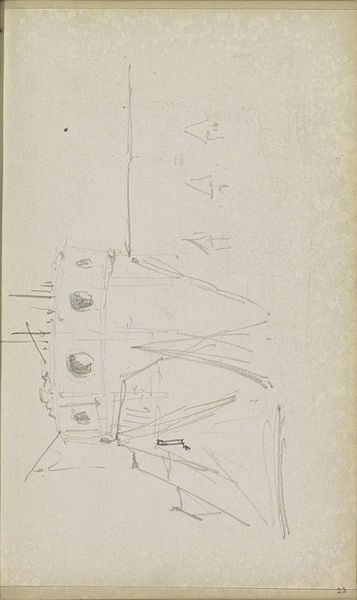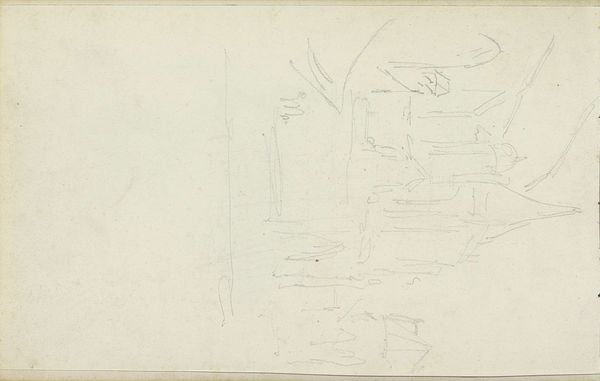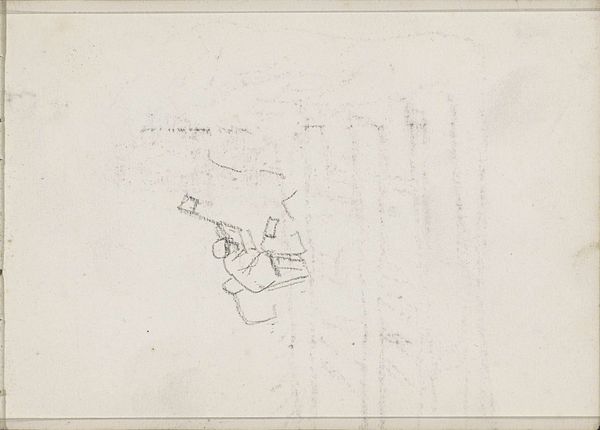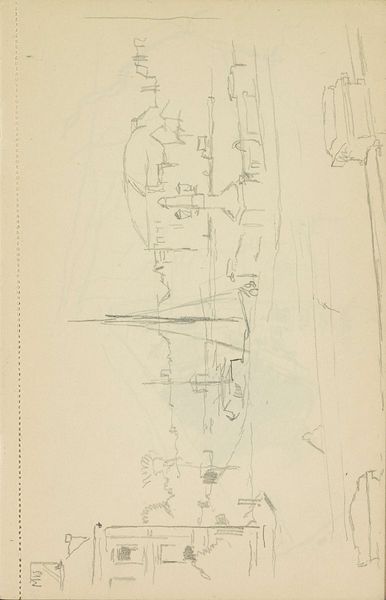
drawing, paper, pencil, architecture
#
drawing
#
pen sketch
#
paper
#
geometric
#
pencil
#
line
#
architecture
Copyright: Rijks Museum: Open Domain
Curator: This delicate drawing, "Architectuurstudies," attributed to Adrianus Eversen and dating from around 1828 to 1897, offers a fascinating glimpse into the architectural details that captured the artist's eye. Editor: It has a skeletal feeling, doesn’t it? Like uncovering the hidden bones of buildings, rendered with such a light touch on paper. It feels ephemeral. Curator: Absolutely. It’s created using pencil and pen, revealing the artist's focus on capturing geometric form and detail. This approach really showcases architectural elements during a period where cityscapes were rapidly transforming due to industrialization. It’s an intentional move toward classical foundations in urban environments, I think. Editor: That's what’s interesting. These studies reflect both progress and nostalgia. On one hand you see attempts to map and replicate the changing face of architecture, and on the other you are observing how architecture functions as an identifier that encodes political and cultural meaning for the residents, which isn't reflected by this rendering. It doesn’t read as human to me. Curator: I see what you mean, but these sketches provided the blueprint that would become buildings. Eversen, in many respects, cataloged what was going up around him, so they were meant for more technical minds rather than the everyday residents. Editor: But whose history gets told? Was it truly "progress," or was it another chapter in imposing aesthetics on marginalized populations, shaping city spaces without considering how the majority might relate to that process? This blueprint stage matters; it’s not politically neutral. These weren't built to serve the masses, even when positioned as some sort of civic good. Curator: Your view reminds us to examine how even seemingly simple architectural sketches can reflect broader power structures and social values. Editor: Precisely. I think this drawing speaks to the visual language used to reinforce what types of structures are considered historically meaningful. What the drawing doesn’t represent equally communicates what we’re meant to prioritize. Curator: A pertinent insight, as always, that deepens how we interact with artwork of the era.
Comments
No comments
Be the first to comment and join the conversation on the ultimate creative platform.
